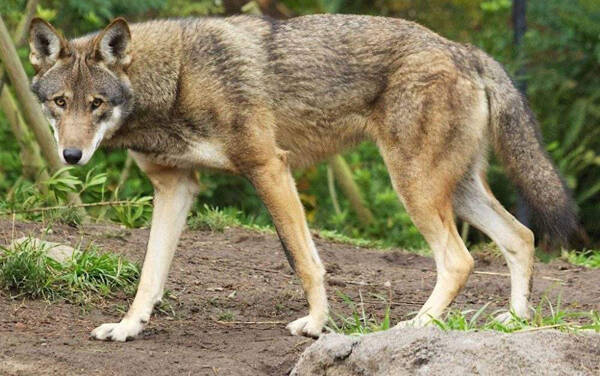Red wolf
IUCN
LCBasic Information
Feature
In winter, the red element in the coat color is dominant
Distribution and Habitat
The red wolf once ranged throughout the southeastern United States, from Pennsylvania on the Atlantic coast to Florida to central Texas, from the Gulf Coast to central Missouri and southern Illinois, and also appeared in northern Maine. The natural radiation territory of the red wolf is 25 to 50 square miles. Any land that can provide enough food, water and dense vegetation can become a habitat for the red wolf.
The main areas of distribution are the Alligator River National Wildlife Refuge and the Great Smoky Mountains National Park in North Carolina. There is also uncertainty in Canada.
Appearance
The red wolf is 95-120 cm long, with a tail length of 25-35 cm and a weight of 20-35 kg. Red wolves are smaller than gray wolves and have longer heads, stronger legs and larger ears than coyotes. They have short, coarse fur, with the upper body color mainly a mixture of cinnamon red and tan, gray or black, black on the back, tan on the muzzle and limbs, black on the tail tip, and bright eyes. In winter, the red element in the fur color dominates. They shed their fur every summer. Most live about 4 years, but there are also records of some living up to 14 years.
Details
Red wolf (scientific name: Canis lupus rufus), also known as Red Wolf in English, is a canine species that lives in North America and has 4 subspecies.

Red wolves communicate with their conspecifics through tactile and auditory signals, body language, pheromones, and vocalizations, all of which help communicate about social and reproductive status and mood. Social bonding is often achieved through touch. Smell is used first to demarcate territories.
Red wolves require a habitat and hunting range of 10 to 100 square miles, usually hunting in a specific area for 7 to 10 days before moving to a new area and range. The main food, such as grouse, raccoons, rabbits, mice, carrion and animals in livestock, will also eat carrion. The natural enemies of red wolves are other large animals, such as crocodiles, large birds of prey and mountain lions.
A red wolf group usually consists of a pair of mating and giving birth to cubs, living in harmony, and the frequency and intensity of their calls are between coyotes and gray wolves. Red wolves build dens within their range or occupy dens used by other animals. These dens are usually located in hollow tree trunks, sandy areas and river banks in densely vegetated environments. The breeding season is spring, extending from January to March. The gestation period is 60-63 days, and an average of 3-6 cubs are born per litter. Up to 12 pups. Sexual maturity is usually reached around 15 to 20 months. Red wolves are social animals, and each pack has a fixed territory. The territory is marked by scent. There is only one breeding pair of red wolves in a pack. Other pack members help the leader raise the pups together.
Between 1900 and 1920, red wolves were hunted most extensively by humans, using poisoning, hunting and killing methods to cause a devastating blow to the number of red wolves in eastern America. By 1980, red wolves, which once occupied almost all of the southeastern United States, were declared extinct in the wild. In the late 1970s, 14 red wolves were found in the wild and were bred in captivity for purebred genetic protection. Since 1987, hundreds of red wolves have been released into the wild. However, they are still seen as unwanted invaders and hunted by some people. In addition, the threat of hybridization with wolves still exists. Due to the release of red wolves into the wild and captive breeding, there is a positive trend of increasing numbers. With education and increased funding from conservation organizations, it is expected that red wolves will continue to breed and survive in the wild and once again become a thriving animal on the east coast of North America. As of September 2002, there are approximately 175 red wolves in captivity at 33 facilities in the United States and Canada. The purpose of this captive population is to protect the genetic integrity of the species and to prepare for reintroduction of animals.
The Convention on International Trade in Endangered Species (CITES) does not include this critically endangered species in its scope of protection because the population released into the wild cannot be confirmed as a stable wildlife species that can reproduce, survive and thrive.
Listed in the IUCN ver 3.1: 2008 Red List of Endangered Species ver3.1 - Critically Endangered (CR).
Protect wild animals and stop eating game.
Maintaining ecological balance is everyone's responsibility!








